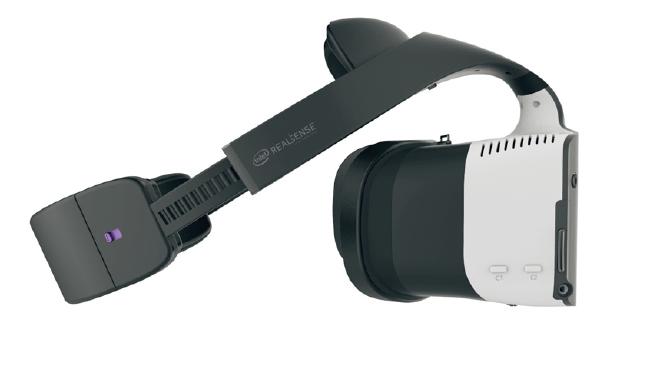SAN FRANCISCO ( MEDIA REPORT )
US tech giant Intel is taking with its own all-in-one virtual reality platform that doesn’t need to be connected to a computer.
The tech giant kicked off its Developer Forum in San Francisco with a new headset which has no cords, instead using built-in computing power and batteries to allow users to move around freely.
Project Alloy headsets have front-facing 3-D camera technology known as RealSense, which allows the wearer to see objects surrounding them in the physical world and to use hand gestures rather than needing a separate controller.
Intel’s approach could be considered a variation on augmented reality, a term that usually refers to headsets that combine digital images with the physical world. The company on Tuesday applied the term “merged reality” to Project Alloy, stressing the benefits of RealSense in making simulated experiences more useful and convenient.
“When sight and computing come together, it gives the device the ability to understand and respond to its environment,” Intel CEO Brian Krzanich said at the launch.
“Merged reality is about more natural ways of interacting with and manipulating virtual environments,” he said, adding the device’s batteries would “liberate you from the controllers and the nunchucks of today’s VR systems by immersing your hands — your real-life hands — into your simulated experiences.”
Intel’s Craig Raymond displays the Project Alloy virtual reality headset during the Day 1 keynote at the 2016 Intel Developer Forum in San Francisco on Tuesday, Aug. 16, 2016. (Credit: Intel Corporation)
The company added it had focused on collision detection and avoidance, and set the headset would be “ground breaking for virtual reality.”
Intel will be going up against rival products including Facebook’s Oculus headset, and HTC’s Vive, both of which need to be connected to computers or gaming consoles to operate.
No pricing was discussed for the technology, which is expected to become available to developers by December 2016 and then as an open platform in 2017.
In other news at the conference Microsoft’s head of Windows Terry Myerson announced an Intel partnership to make all future Windows 10 PCs able to support mixed reality applications, through a software update next year.
“All Windows 10 PCs next year will include a holographic shell,” Mr Myerson said, meaning effectively that any VR or AR headset will be able to run 3D Windows 10 apps.
Courtesy.. The Australian Business Review

